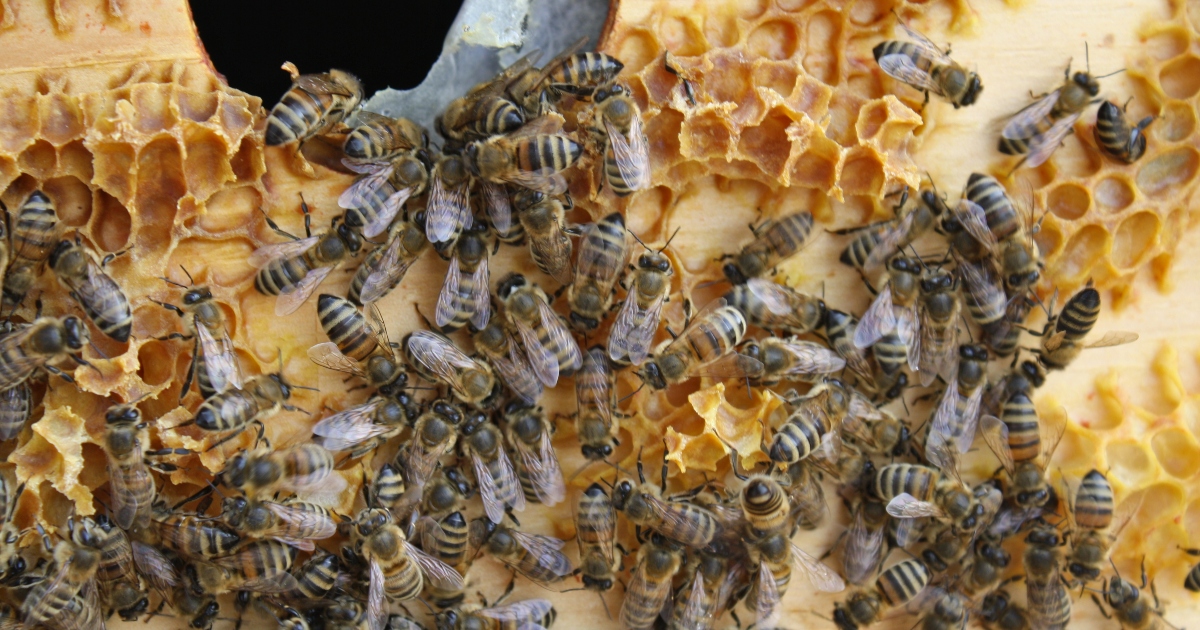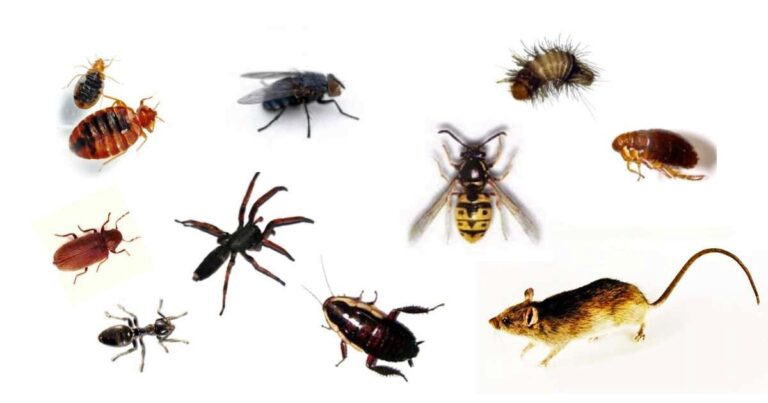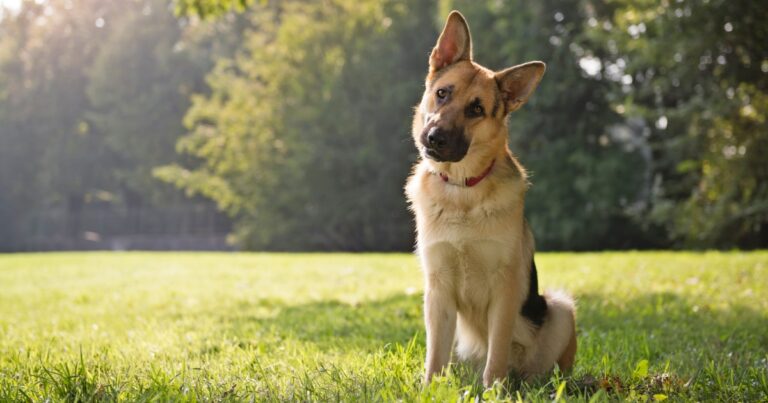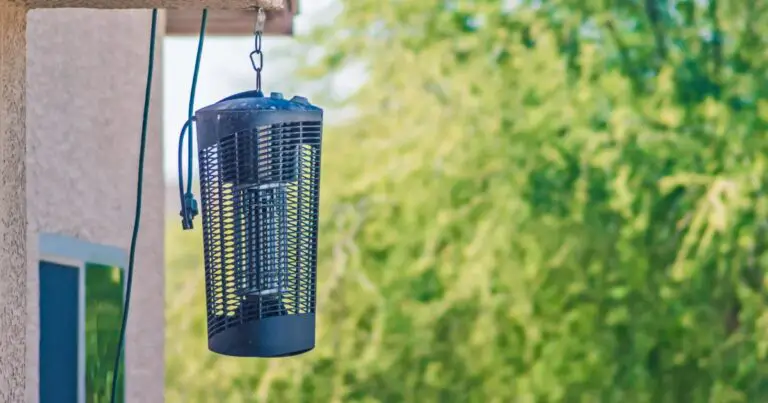The Day Before The Bee Has Been (Feature Article)
Julie Pare, owner of Julie and the Bees, walked along a trail towards some of her hives with her dog, Charlie, leading the way. She lives on 100 acres of untouched, organic land, in Arkell, Ont. not too far from Starkey Hill. As Julie walked towards the barn, she found the door to the courtyard blown open by yesterday’s storm. The day was calmer than the last but there was still a brisk wind and cold air.
Julie and Charlie walked past the stone barn, which had been built by Scottish masons in the 1800s and they approached the hives that were still in hibernation. The skunk traps remained untouched and the bricks were still atop the roofs of the hives. Knowing the hives weren’t touched by predators, Julie went back to the house for a warm cup of green tea and honey.
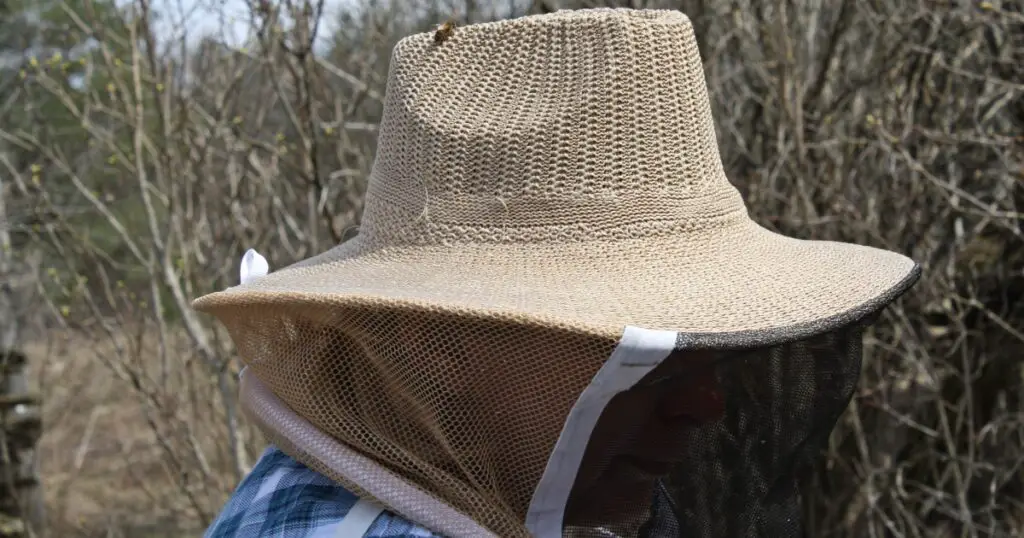
“I got addicted to bees,” said Julie. “I got addicted to bees. I love them. I love them. They took me into a world I never thought I would find … My dad told me before I ended up with as many hives as I have now, he said ‘Julie, you’ve always put 150 per cent of yourself into each job that you’ve had, but this is different. You really love bees!’”
Honeybees have been disappearing at an alarming rate and what’s the cause? Neonicotinoids, varroa destructor, small hive beetles, mice, skunks, and agricultural practices. Fingers can be pointed in any direction, but when you point a finger remember that you have three pointing back at yourself.
“This really old beekeeper called The Bee Man, his name was Robert Ireland, he was kind of opposite to Paul Kelly and those people because he was completely enamoured and people thought he was crazy but he came to me and the summer before he died he gave me a folder of all his how to raise bees and bee DNA and all that and he told me, ‘Julie, to be a good beekeeper, you got ta think like a bee.’”
Julie insisted that the cuteness of the bees was what initially enamoured her, but as her curiosity grew, so did her fascination.
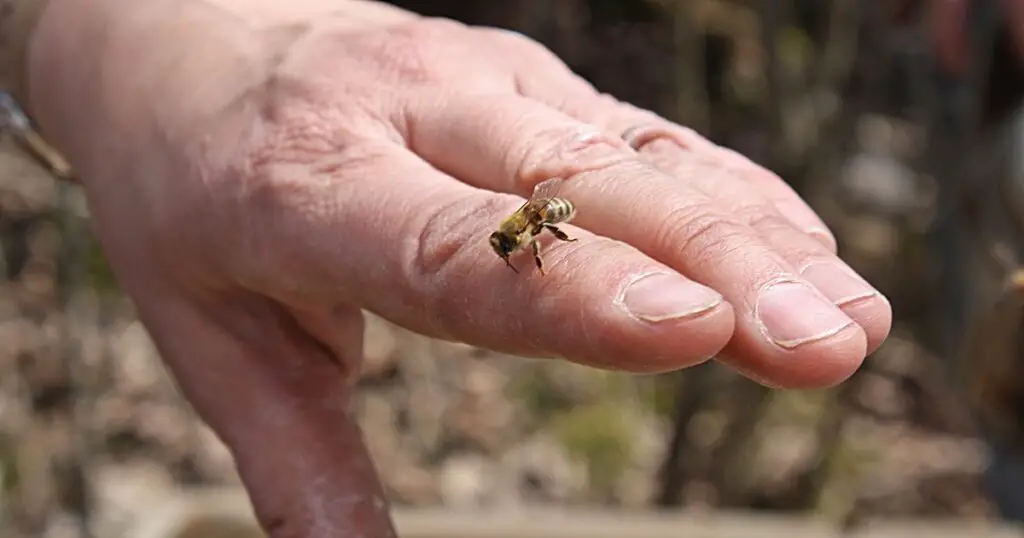
“At one point in your life you start to see what it is that you love, and it took me 47 years to understand that this is my passion and I love it,” said Julie. “It’s a very clean, very fuzzy, very amazing creature. The way they communicate with each other made me feel like I’m an idiot as a human. Oh my god, if we communicated with each other the way that they do, the world would be an amazing place.”
When asked how she became a beekeeper, Julie simply said, “By accident,” and began to giggle. “I worked for the makers of Apistan.”
Apistan is a strip that is placed inside of the hive and when bees come into contact with the strip they contact with a chemical called tau-fluvalinate and as the bees interact with one another, they transfer the chemical which is bee-friendly but toxic to varroa mites.
“We were looking for an organic way to kill varroa mites and so we had to study the life cycle of all mites and the life cycle of bees,” said Julie. “It was all academic but I wanted to go inside a hive and see how the bees behave and how this product even works because I wasn’t a beekeeper.”
Varroa mites, also known as varroa destructor, are an invasive species of parasite from Asia. They are now in almost every hive worldwide and transmit a disease commonly known as deformed wing virus to the honey bees which has symptoms such as deformed wings and abdomens, as well as a reduced life span.
“[Varroa mites] were present in our hive,” said Stephen. “At the beginning of the summer it was a really low count because they were a new hive and towards the end of summer we did a check and it was still pretty good, then coming into fall we were about to do our fall treatments and we noticed and for the first time actually saw a couple of the worker bees have [varroa] present and that was kind of alarming.”
One of the leading causes to the decline in bee populations happens to be the varroa mites because many bees around the world have not found ways to fight varroa off on their own.
“Varroa is an external parasite on bees and it has the largest parasite-to-host ratio known on the planet,” said Paul Kelly, Research and Apiary Manager at the University of Guelph. “When we want to be dramatic, we say it’s like having something the size of a rat on the human body.”
The varroa mites poke holes in the honey bees and feed on their hemolymph, which is the bee equivalent of blood. They affect both immature and mature bees, as they breed on the bee pupae once the pupa’s cell has been sealed. When the bee hatches, the mites don’t kill the bee, but they weaken them and vector the virus, continuing to feed on the bee’s hemolymph.
“If you have varroa mites in your hive – and everybody does – if you do nothing within two years, every hive would be dead,” said Paul. “It’s not a matter of some kind of management being optional, it’s mandatory.
“Our bees didn’t evolve together with this mite, the mite came from a different bee species so there is no natural resistance mechanisms in our honey bees. Over the long term we hope that that’s the solution – to breed for resistance.”
There are many ways to combat varroa mites organically. Dr. Ernesto Guzman, Professor and Director of the Honey Bee Research Centre at the University of Guelph, has been researching the use of thyme oil to combat varroa, which has proven to be effective but is still less effective than other current preventative methods.
“Formic acid, so far, is the winner, but it is dangerous,” said Julie. “You have to wear gloves, you have to be aware of the fumes, you have to wear a mask and you have to make sure the pads are not too soaked with formic acid or they will drip on the bees, kill them and if the temperature is too hot the vapours are too strong and will suffocate the bees and will actually remove the pheromone of the queen.”
Other combative methods include cultural techniques such as splitting hives, using screened bottom boards so that mites may fall through and out of the hive, drone cell frames which act as a mite trap, the queen lays eggs in the drone cells, which varroa are more attracted to because they take longer to develop. Once the cells are capped, the entire frame is destroyed to save the rest of the hive. Another method is constant heat of 116 degrees, which is hot enough to kill off the varroa and unfortunately kills the brood, but the bees can continue to live.
“Breeding for resistance is another natural based approach,” said Paul. “We know that mites in the original species of bee that mites evolve with, we know those species have mechanisms of resistance. One of which is grooming behaviour so they can groom mites off each other and off themselves. We’ve done experiments here looking at that behaviour in our species of honeybee, Apis mellifera, and we’ve been able to show that if bees are better at grooming, their population growth is slower in those colonies.
“Another mechanism that bees have for resistance of varroa, as well as other diseases, is hygienic behaviour. So if they can identify affected pupae and toss them out of the colony, they’re also tossing out the mites.”
Being an invasive species, many bees around the world have not yet developed ways to fight off the mites on their own. The African honeybees, as well as Russian honeybees have evolved alongside the varroa and have therefore found means of getting rid of varroa within the hive by grooming themselves and each other, tossing the mites out. They also use hygienic practices, however, they both show aggressive traits and swarm, which are not ideal traits for beekeepers.
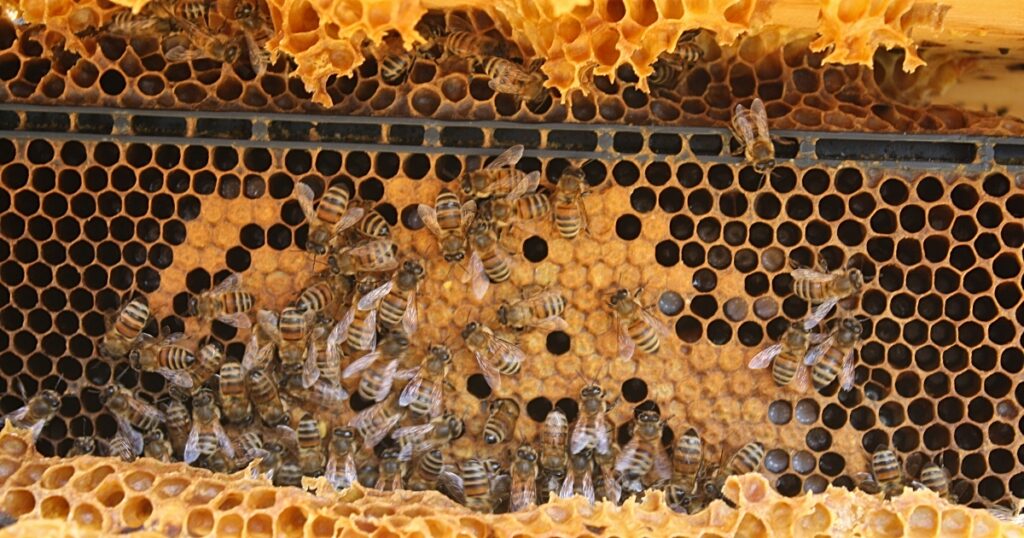
“I was intrigued in a fairy tale kind of way when I read about Buckfast bees,” said Julie. “I thought it was so amazing how this monk, who’s not from England, had to come to this monastery to take over the apiary. He gets to this apiary and there’s this disease that killed off [most] of the bees at the time so he had to start from scratch and worked with four different European countries and he even went as far as the Sahara desert to look at bee behaviour. He was so ahead of his time. The traits he selected for the Buckfast bee are what everybody loves.”
Karl Kehrle, better known as “Brother Adam,” cross-strained bees on the grounds of Buckfast Abbey, hence the name. He developed the Buckfast honeybees in a fashion that gave them dominant traits towards disease resistance, disinclination to swarm and honey production.
Although Buckfast honeybees have some resistance to disease, they do not fight the varroa off well own. However, beekeepers rave about their calm, gentle behaviour, their high honey production and their survival rate during winter hibernation.
Julie continued talking about her fascination of Brother Adam’s Buckfast bees and her experience with them.
“They were so magical,” said Julie. “They were in a nuc, a small box of bees – it’s a bee family. There’s fifteen to twenty-thousand bees [in a nuc] and a full grown colony has forty to sixty-thousand bees in it. So that one Buckfast nuc that I got that year, gave me 300 pounds of honey in the very first year and I learned a lot. Because it was so Walt Disney in my head I thought, ‘these profess bees are gonna be so cute and sweet.’”
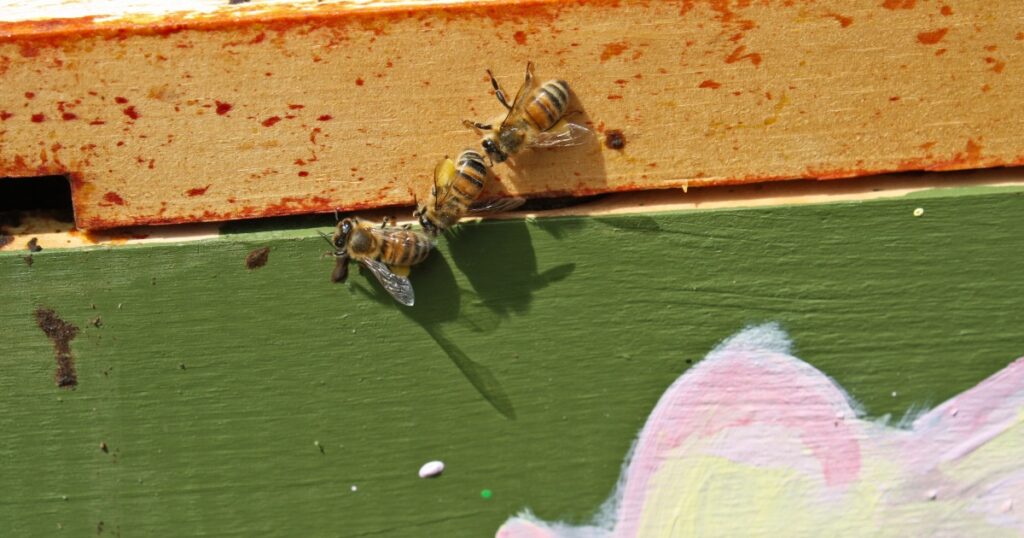
The Buckfast bees get angry just like any other bee, however, they do not have a swarm mentality which is why they do not sting as much.
“If I did something wrong, if I dropped something in my first year of practical beekeeping, they would make that [angry buzzing] sound and they would be around me but they wouldn’t sting me,” said Julie.
Paul Kelly and the University of Guelph’s Honey Bee Research Centre initially bought their bees from Brother Adam, however, after he passed away in 1996, they began to purchase Buckfast honeybees from a breeder in Denmark. Now, the University of Guelph’s Honey Bee Research Centre is the only certified Buckfast breeder in Ontario, breeding the Buckfast on islands in Lake Simcoe.
“One thing that Brother Adam did was mate these queens in isolation out in the moors where there were no other wild bees around, and we do that by mating our queens on islands in Lake Simcoe,” said Paul. “We do that so we can control who our queens are mating with and maintain the qualities that we’re looking for, and to improve some of them.”
However, it was not always Buckfast, meeting with bee associations, scraping wax, or pouring honey for Julie. She was in a depression before she found her bees. Beekeeping became her meditation.
“I had just come from the death of my sister and I had been through hell and back and the bees always made me feel better,” said Julie. “Being a part of the bee association took me out of my sadness, my life was really difficult at the time. I had to help my sister die, I had to help my father die, my oldest daughter attempted suicide, herself. I had so many horrible things happening in my life that getting together with these beekeepers helped me focus on something positive.”
Beekeeping has been compared to meditation by Buddhist meditative teacher and author, Mark Magill who draws parallels between the two subjects whilst simultaneously showing the value of nature from both.
“I found it therapeutic in a sense,” said Dani. “When I was getting into beekeeping I was also getting into gardening and learning more about plants and flowers because it really goes hand in hand.
“Our main priority is spreading awareness and teaching people how they can help the bee cause from their own homes, not necessarily having to beekeep, there are so many other ways you can help. Whether you choose to be a beekeeper or not, you still have the power to make a huge impact and even if it’s just planting a few flowers in your garden for the pollinators, stopping the use of pesticides or buying local honey.”
Honeybees are responsible for 30 per cent of the crops worldwide due to cross-pollination and they are accountable for up to 90 per cent of our wild plants. If the bees died, so would thousands of plants and crops, and in the following years, people would begin to die of starvation.
“We were talking about the most important creatures on the planet that have direct relationships to humans in terms of the food we eat etc. and bees contributing to one third of the world’s food,” said Stephen Pepler, while talking about why he and Dani Subject partnered to begin Buzzkill in the spring of 2016.
“Why should we care about bees?” asked Stephen. “The selfish answer is that you should care about yourself. Someone once said that the day the bees die, you’ll die.”

